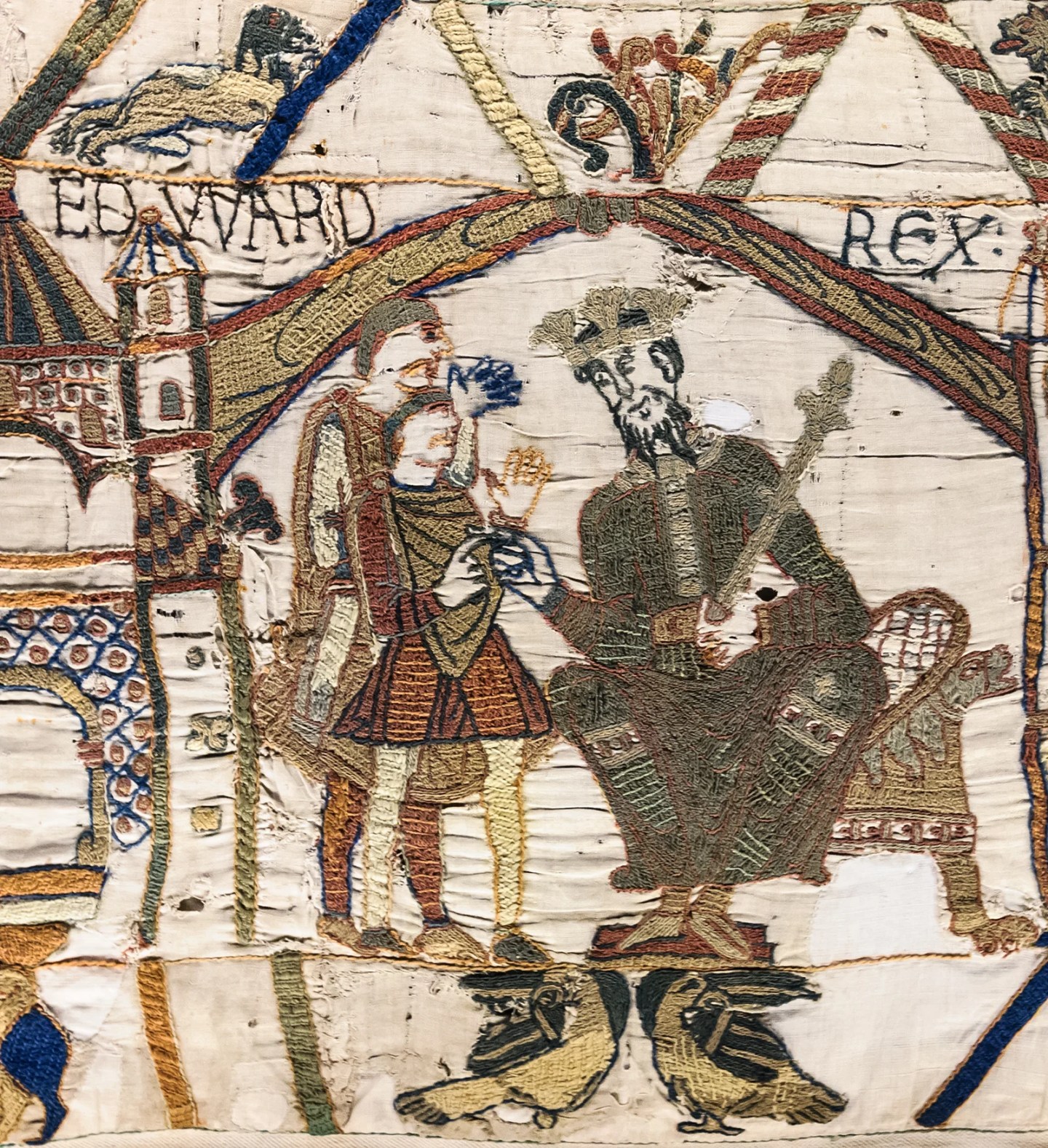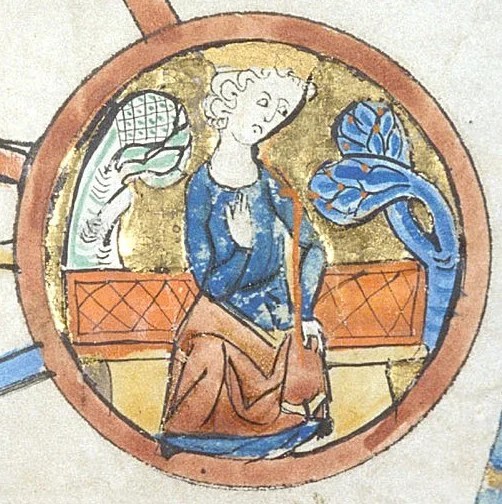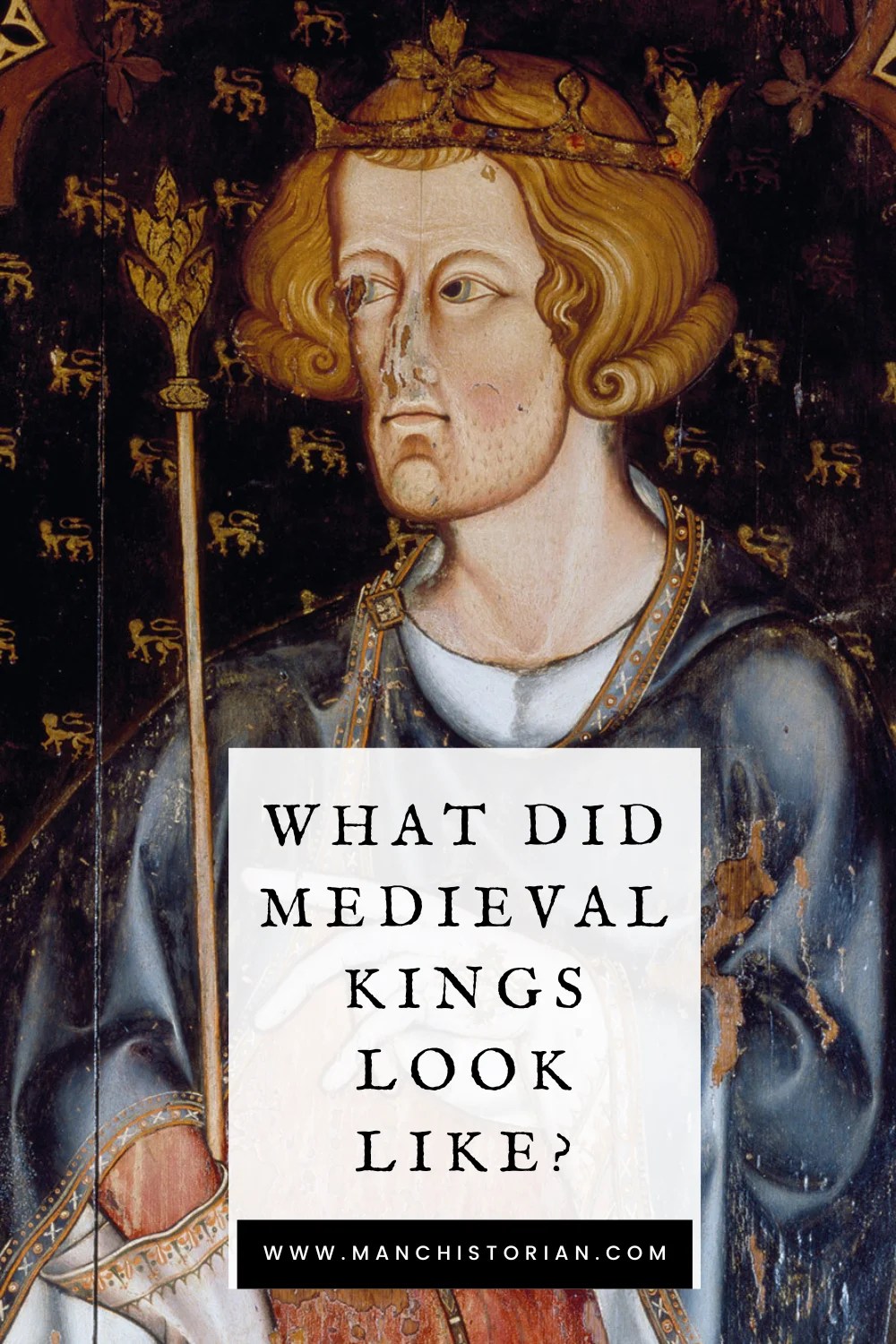
We have many portraits of medieval kings which are heavily influenced by contemporary beauty standards. But what did medieval kings actually look like? In this post we take a look at some descriptions of a selection of medieval kings to try and discover what they did look like in reality.
This is not an exhaustive list and some kings are missing from the chronological sequence. For instance, King John – no detailed physical description exists, but when his tomb was opened in the 18th century, his skeleton measured 5 feet 6 inches, slightly taller than the average man but not as tall as his elder siblings, several of whom measured at least 6 feet. And John’s son, Henry III also lacks a physical description, yet he was later said to have had a dropping eye-lid.
King Alfred the Great
“As he advanced through the years of infancy and youth, his form appeared more comely than that of his brothers; in look, in speech, and in manners he was more graceful than they.”
Asser‘s The Life of King Alfred.

Aethelstan
“of handsome appearance and graceful manners… [N]ot beyond what is pleasing in stature and slender in body; his hair, as we ourselves have seen from his relics, flaxen, with gold threads.”
William of Malmesbury

Cnut
“Cnut was exceptionally tall and strong, and the handsomest of men, all except for his nose, that was thin, high-set, and rather hooked. He had a fair complexion and a fine, thick head of hair. His eyes were better than those of other men, being both more handsome and keener-sighted.”
13th century Icelandic Saga – Knytlinga Saga.

Edward the Confessor
“[H]e was a very proper figure of a man – of outstanding height, and distinguished by his milky white hair and beard, full face and rosy cheeks, thin white hands, and long translucent fingers; in all the rest of his body he was an unblemished royal person.”
Vita Ædwardi Regis qui apud Westmonasterium Requiescit

Harold Godwinson
“Very tall and handsome, remarkable for his physical strength.”
Orderic Vitalis

William the Conqueror
“He was of just stature, extraordinary corpulence, fierce countenance; his forehead was bare of hair; of such great strength of arm that it was often a matter of surprise, that no one was able to draw his bow, which himself could bend when his horse was in full gallop; he was majestic whether sitting or standing, although the protuberance of his belly deformed his royal person.”
William of Malmesbury

William Rufus
“well set; his complexion florid, his hair yellow; of open countenance; different coloured eyes, varying with certain glittering specks; of astonishing strength, though not very tall, and his belly rather projecting.”
William of Malmesbury

King Henry I
“He was of middle stature, greater than the small, but exceeded by the very tall; his hair was black and set back upon the forehead; his eyes mildly bright; his chest brawny; his body fleshy.”
William of Malmesbury

King Henry II
“the lord king has been red-haired so far, except that the coming of old age and gray hair has altered that color somewhat. His height is medium, so that neither does he appear great among the small, nor yet does he seem small among the great. His head is round, just as if the seat of great wisdom, and specially a shrine of lofty counsel. Such is the size of his head, that so it matches with his neck and with the whole body in proportionate moderation. His eyes are round, and white and plain, while he is of calm spirit; but in anger and disorder of heart they shine like fire and flash in fury. His hair is not in fear of the losses of baldness, nevertheless on top there is a tonsure of hairs; his leonine face is rather square.
The eminence of his nose is weighed to the beauty of the whole body with natural moderation; curved legs, a horseman’s shins, broad chest, and a boxer’s arms all announce him as a man strong, agile and bold; nevertheless, in a certain joint of his foot the part of the toenail is grown into the flesh of his foot, to the vehement outrage of the whole foot. His hands testify grossly to the same neglect of his men; truly he neglects their care all the time; nor at any time, unless carrying birds, does he use gloves…
And, he never sits, unless riding a horse or eating, although he has shins greatly wounded and bruised with frequent blows of horses’ hooves. In a single day, if necessary, he can run through four or five day-marches and, thus foiling the plots of his enemies, frequently mocks their plots with surprise sudden arrivals; he wears boots without a fold, caps without decoration, light apparel…
For in fact his flesh would weigh him down enormously with a great burden of fat, if he did not subdue the insolence of his belly with fasts and exercise; and also in getting onto a horse, preserving the lightness of youth, he fatigues almost every day the most powerful for the labour.”
Peter of Blois

Richard the Lionheart
“He was tall [said to be 6 feet 5 inches], of elegant build; the colour of his hair was between red and gold; his limbs were supple and straight. He had long arms suited to wielding a sword. His long legs matched the rest of his body”.
Itinerarium peregrinorum et gesta regis Ricardi

King Edward I
Earned the epithet ‘Longshanks’ for his exceptional height, he was said to stand at 6 feet 2 inches.
“long arms gave him an advantage as a swordsman, long thighs one as a horseman. In youth, his curly hair was blond; in maturity it darkened, and in old age it turned white. The regularity of his features was marred by a drooping left eyelid … His speech, despite a lisp, was said to be persuasive.”
Michael Prestwich (a modern description of Edward)

King Edward II
“Tall and strong, a fine figure of a handsome man.”
Vita Edwardi Secundi

Look out for another installment containing additional kings as we answer the question ,what did medieval kings look like?

Discover more from MancHistorian
Subscribe to get the latest posts sent to your email.
